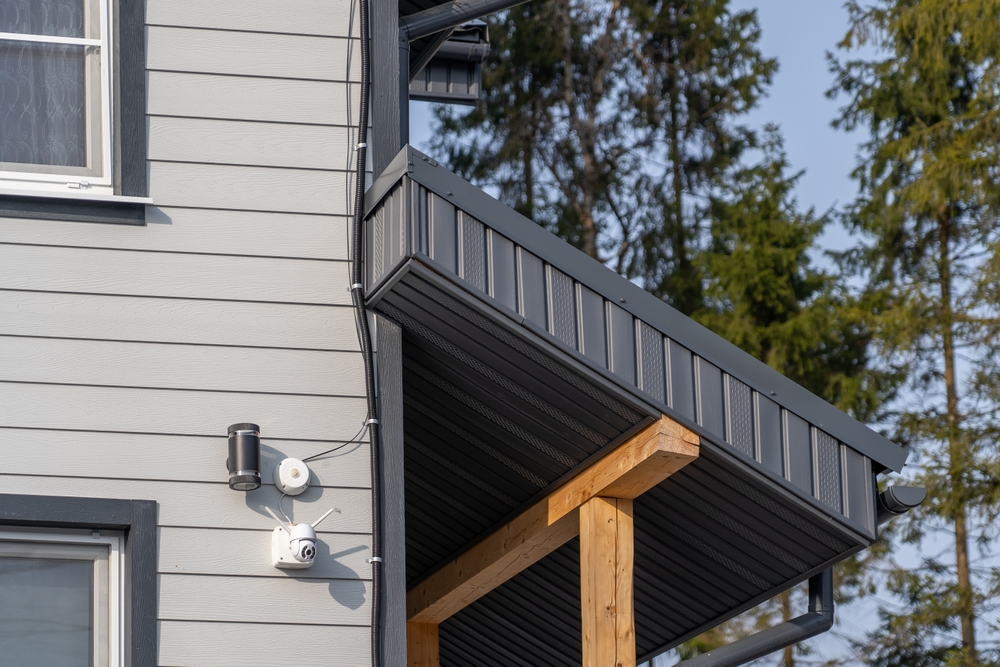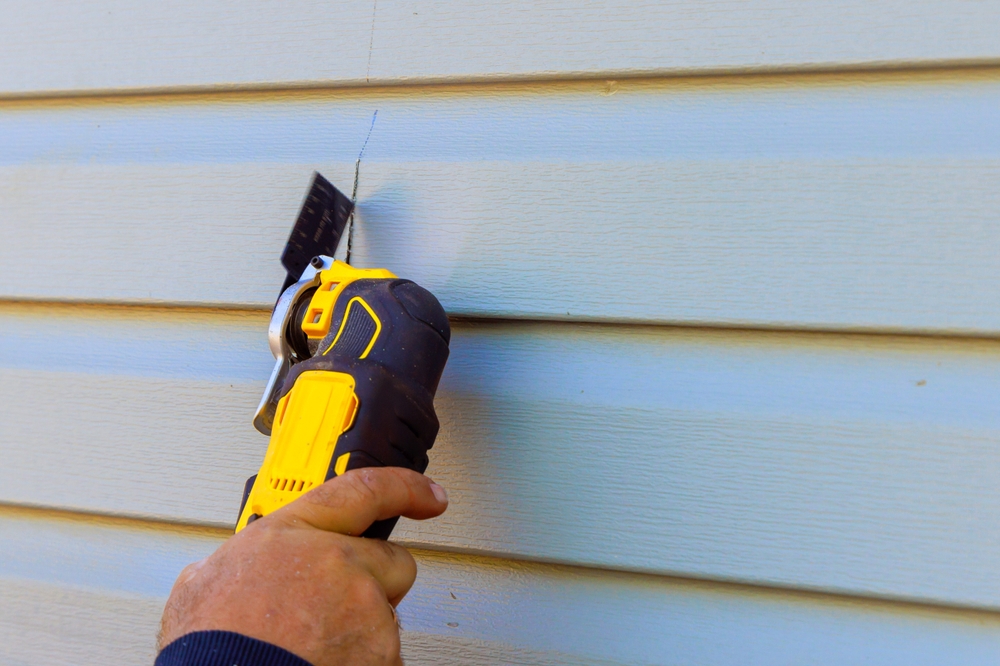Choosing the right siding for a Lake Tahoe cabin isn’t just about looks—it’s about durability, low maintenance, and protection from harsh mountain weather. Snow, ice, UV exposure, and occasional wildfire risks make it essential to select siding materials that can stand up to Tahoe’s climate while keeping upkeep minimal. Whether you’re upgrading a residential cabin or outfitting a commercial property, understanding the best siding options for snow climates is key. In this guide, we’ll explore top low-maintenance siding materials, compare residential and commercial options, and share expert tips from a trusted Lake Tahoe siding contractor to ensure your siding installation in Truckee delivers lasting performance.
Why Low-Maintenance Siding Matters in Lake Tahoe
Life in Lake Tahoe is about enjoying the outdoors, not spending every weekend on a ladder with a paintbrush. Opting for low-maintenance siding means you can spend more time skiing, hiking, or relaxing by the lake and less time worrying about your home’s exterior. In this unique environment, low-maintenance isn’t a luxury; it’s a practical necessity that saves you time, money, and stress.
Protecting Your Home from Snow, Ice, and UV Exposure
The Sierra Nevada climate is relentless. Heavy snow piles up against walls, introducing moisture that can seep into porous materials. The freeze-thaw cycle, where melted snow refreezes in cracks overnight, can pry siding apart. Add in the intense high-altitude UV rays that fade and degrade finishes, and you have a recipe for rapid wear and tear. Low-maintenance materials are specifically engineered to resist these forces, providing a durable shield that doesn’t rot, warp, or require constant refinishing.
Reducing Long-Term Maintenance Costs
Traditional wood siding might look beautiful, but it requires regular scraping, staining, and sealing to protect it from the elements. This ongoing maintenance is not only time-consuming but also expensive. The costs of labor and materials can add up to thousands of dollars every few years. In contrast, low-maintenance siding options like fiber cement or high-quality vinyl can go for decades with little more than an occasional cleaning, offering significant long-term savings.
Top Siding Options for Snow-Prone Areas

When selecting siding for a Tahoe cabin, performance is paramount. You need materials that can handle heavy snow loads, resist moisture, and withstand extreme temperature swings. Here are some of the top low-maintenance choices for our demanding climate.
Fiber Cement Siding: Durability Meets Low Maintenance
Fiber cement is often considered the gold standard for siding in mountain regions. Made from a blend of cement, sand, and cellulose fibers, it is exceptionally strong and stable. It doesn’t absorb moisture, so it won’t rot or warp, and it’s impervious to pests and fire—a crucial benefit in wildfire-prone areas. Brands like James Hardie engineer their products for specific climates, ensuring optimal performance in places like Tahoe. With a durable, baked-on color finish that resists fading, fiber cement offers the look of wood without the demanding upkeep.
Engineered Wood and Composite Siding Options
For those who love the classic look of wood but want better performance, engineered wood and composite siding are excellent alternatives. These products are made from wood strands or fibers combined with resins and treated with waxes and other binders to resist moisture and decay. They provide a more authentic wood-grain texture than vinyl while offering greater stability and durability than natural wood. While they may require some maintenance over their lifespan, it is significantly less than what traditional wood demands.
Vinyl Siding: Pros and Cons for Cold Climates
Vinyl siding is a popular choice due to its affordability and minimal maintenance requirements. It never needs painting and can be easily cleaned with soap and water. However, not all vinyl is suitable for cold climates. Lower-grade vinyl can become brittle in freezing temperatures and may crack on impact from hail or a stray snowball. When considering vinyl, it’s essential to choose a high-quality, thick-gauge product that is rated for cold weather and includes a strong UV inhibitor to prevent fading and degradation.
Comparing Materials: The Best Siding for Snow Climate
So, what is the best siding for a snow climate? The answer often comes down to balancing budget, aesthetics, and long-term performance.
- Fiber Cement: Top-tier for durability and low maintenance, but comes with a higher upfront cost. It’s the best all-around investment for protection against all of Tahoe’s climate challenges.
- Engineered Wood: A great mid-range option that offers the beauty of wood with enhanced durability. It provides a good balance of aesthetics and performance.
- High-Quality Vinyl: The most budget-friendly, low-maintenance option. The key is investing in a premium product to avoid the cracking and warping issues associated with cheaper alternatives in cold climates.
Residential vs. Commercial Siding Considerations in Tahoe
While all properties in Tahoe face the same weather, the specific demands of residential and commercial buildings can differ. A cozy cabin has different needs than a bustling lodge or retail center.
Residential Siding Upgrades for Lake Tahoe Cabins
For a residential cabin, siding is a major part of its character and curb appeal. Homeowners often want a material that complements the natural, rustic beauty of the area. This is where the aesthetic versatility of fiber cement and engineered wood shines, as they can mimic the look of traditional wood siding, shakes, or board-and-batten styles. Insulation is another key factor; choosing insulated siding or adding a layer of rigid foam insulation during installation can significantly improve a cabin’s energy efficiency and comfort.
Commercial Siding Options for Offices, Lodges, and Retail
On commercial properties, the primary concerns are extreme durability, low maintenance, and compliance with building codes. The siding must withstand high traffic, potential impacts, and years of exposure with minimal upkeep. Fiber cement and metal panels are popular choices for their strength and longevity. A Lake Tahoe siding contractor with commercial experience will also ensure that materials meet fire-resistance ratings and other local regulations, protecting the business owner’s investment and ensuring public safety.
Choosing the Right Lake Tahoe Siding Contractor
The best siding materials in the world will fail if they are not installed correctly. Selecting a qualified, experienced contractor is the most important step in ensuring your project’s success.
Local Experience Matters: Truckee and Tahoe Installations
A contractor from out of the area may not fully grasp the specific challenges of building in the Sierra Nevada. A local Lake Tahoe siding contractor understands the climate firsthand. They know the proper techniques for flashing in heavy snow areas, how to manage water drainage effectively, and which materials have a proven track record of success in our region. Their local experience is an invaluable asset that protects your investment.
Certifications and References for Residential and Commercial Projects
Look for contractors who have earned certifications from leading manufacturers, such as being a James Hardie Elite Preferred Contractor. This demonstrates that their team has been professionally trained to install those products according to strict standards, which is often required to validate the material’s warranty. Always ask for a portfolio of completed local projects and a list of references you can contact to inquire about their experience.
Tips for Successful Siding Installation in Truckee
A successful siding project is all in the details. From preparation to the final touches, every step matters, especially when preparing a home for the extreme weather of the Sierra Nevada.
Preparing Substrates for Extreme Weather
Before any new siding goes on, the wall underneath—the substrate—must be properly prepared. This involves inspecting the sheathing for any signs of rot or damage and making necessary repairs. A professional crew will ensure the surface is clean, dry, and sound, providing a solid foundation for the new siding.
Ensuring Proper Insulation and Flashing for Snow Climates
A critical part of any siding installation in Truckee is the installation of a weather-resistive barrier (WRB), or house wrap. This material serves as a secondary line of defense against moisture and air intrusion. Equally important is the proper installation of flashing—thin, waterproof material—around all windows, doors, and rooflines. This directs water away from vulnerable areas, preventing leaks that can lead to costly damage.
Working with Experienced Siding Installation Truckee Experts
An experienced installation team knows that it’s the small things that make a big difference. They will use the correct type and number of fasteners, leave appropriate gaps for material expansion and contraction, and meticulously seal all joints and trim. This attention to detail is what separates a standard job from a high-performance exterior that will stand the test of time.
Investing in low-maintenance siding for your Lake Tahoe cabin pays off with long-term protection, curb appeal, and peace of mind. From fiber cement to engineered wood and vinyl, choosing the best siding for snow climate conditions ensures durability against snow, ice, and sun. Whether you’re tackling a residential project or a commercial build, working with an experienced Lake Tahoe siding contractor guarantees professional installation and results that last. If you’re considering siding installation in Truckee or across Lake Tahoe, trust local experts like Hexteriors to provide quality materials, expert guidance, and flawless workmanship for your cabin or commercial property.
FAQs
1. What is the best siding for snow climates like Lake Tahoe?
Fiber cement siding, like Hardie Board, is often considered the best siding for snow climates. It resists warping, cracking, and moisture while providing long-term durability, making it ideal for both residential cabins and commercial properties in Lake Tahoe.
2. Can vinyl siding withstand Truckee’s extreme winters?
Vinyl siding can handle moderate snow and cold, but heavy snow accumulation and freeze-thaw cycles can stress panels over time. Adding proper insulation and choosing high-quality vinyl can improve performance, but fiber cement often outperforms vinyl in harsh climates.
3. How do residential and commercial siding needs differ in Lake Tahoe?
Residential siding focuses on aesthetic appeal, energy efficiency, and long-term durability for cabins or homes. Commercial siding, meanwhile, requires higher durability against traffic, UV exposure, and structural stress, often favoring materials like fiber cement or engineered wood.
4. Why should I hire a local Lake Tahoe siding contractor?
Local siding contractors understand the unique weather challenges of Tahoe and Truckee, including snow loads, high-altitude UV, and freeze-thaw cycles. Experienced contractors ensure proper installation, flashing, and insulation, maximizing your siding’s lifespan.
5. How much does siding installation in Truckee cost?
Costs vary based on materials, project size, and complexity. Fiber cement and engineered wood typically cost more upfront than vinyl but offer superior durability and lower long-term maintenance. A reputable Lake Tahoe siding contractor will provide a detailed, transparent estimate before starting.




